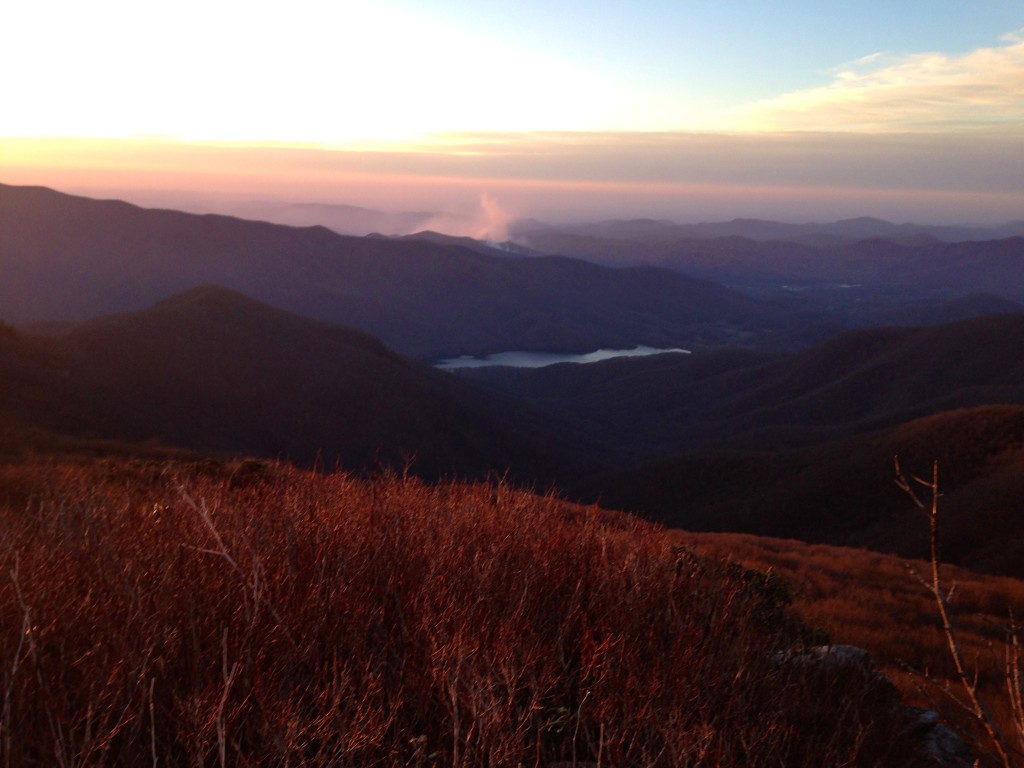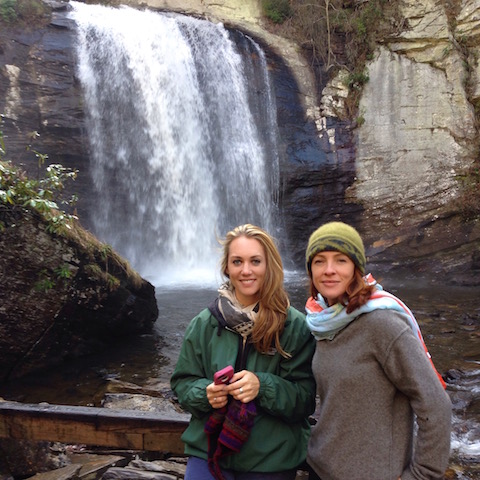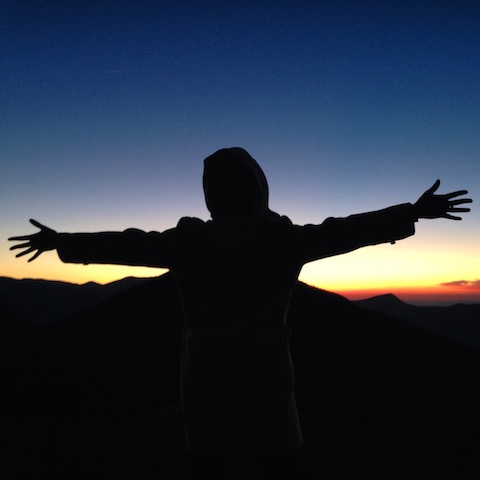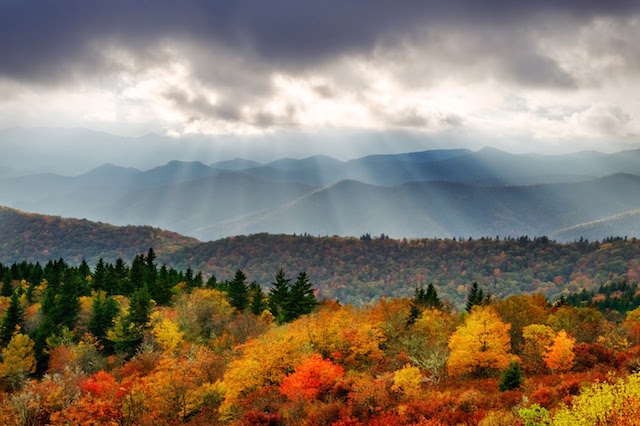The Blue Ridge Mountains surrounding Asheville, North Carolina make it our top southeastern destination for autumn leaf watchers. The fall color season extends from late September through early November, with trees turning first at the highest elevations of 6,000 feet, and moving downward through October to Asheville at 2,500 feet, and then to Chimney Rock at 1,300 feet.

This significant variance in elevation means there is no “peak week” for viewing fall color, and the fall display can be enjoyed for six weeks or more, depending at which elevation it is viewed.Just a drive on the Blue Ridge Parkway alone during the autumn months can deliver all the joy and delight that the vibrant fall colors bring.
Natural beauty, outdoor adventure, and elite hiking
Our first trip to the Blue Ridge mountains delivered exactly what we were hoping for — rugged nature, epic mountainscapes, challenging hiking, pristine waterfalls, and views for days. With various adventure options for all abilities, the region is also a haven for world-class athletes, too, like local hiking expert Jennifer Pharr Davis. A towering but slender powerhouse, she holds the long-distance hiking record on the Appalachian Trail for any man or woman — 2,100 miles in 46 days.

Blue Ridge Hiking is Pharr’s local guiding company and the premier source for hiking in the area. Guides can tailor hikes for every level of fitness, from easy walks to waterfalls to more challenging day hikes, and even prepare experienced hikers for long-distance adventures on the Appalachian Trail. We were thrilled to join her for a day of adventure in the mountains — our goal? Waterfalls! And we saw plenty.

One of Pharr’s favorite parts of her work is helping first-timers get a leg up on long-distance hikes — what she calls “life-altering journeys” — a trend that she’s seen on the rise since Cheryl Strayed’s book “Wild” about hiking the Pacific Crest Trail came out, and even more so since the film, starring Reese Witherspoon, was released.

Creepy Crawlies, wildlife, and epic vistas
For people who appreciate the natural world, the possibilities in Asheville are endless. It’s a delight for experts, too. Consider this: biologists estimate more than 100,000 living organisms in the Smokies including 500 varieties of spiders and 2,500 species of beetles.
If tiny creepers unnerve you, consider a day trip to Cataloochee Valley, home to a herd of antlered elk; marvel at tiny bonsai replicas of famous mountain landscapes at the North Carolina Arboretum; search for rare orchids near the Green River Gorge; or get up-close, but not too personal, with native black bears at the WNC Nature Center or Grandfather Mountain.
Visit the Roan Highlands, a cluster of treeless mountain tops accessible by highway and bisected by the Appalachian Trail. These ecological anomalies are among the area’s most beautiful places, many easily accessible along the Blue Ridge Parkway. Local favorites are within striking distance in every direction, from the blueberry patches of Graveyard Fields; to the pink, lavender and purple blooms of Carolina Rhododendrons on Craggy Mountain; or the 360 degree views from the grassy summit of Max Patch.

We left our hotel at 5 am one morning, just to catch the sunrise over Max Patch, and it the breathtaking beauty as the sun appeared over the mountains was worth the early morning wake up! Alone in the dark, quiet, and chilly winds, we were terrified that we’d run into a bear, so to warn them of our presence, we chose to sing, loudly, the entire hike to the summit. We owe the wildlife an apology for our horrific versions of Taylor Swift’s “Shake it Off” and Bobby McFerrin’s “Don’t Worry, Be Happy.”
After returning from the forest
Check out the foraged cocktails at Asheville’s newest craft cocktail bar, Sovereign Remedies, by Charlie Hodge. Try the Garden Rickey cocktail with vodka, carbonated honey tea, fresh lime and wild locally grown holy basil.
And don’t miss Rhubarb’s Sunday Supper! Three-time finalist for the James Beard “Best Chef in the Southeast” award, John Fleer is known for his “foothills cuisine.” His love for tradition is echoed in the Supper, a three-course “pass the plate” gathering set at communal tables. Each week, a guest farmer is invited to share stories and dine alongside guests.




 Subscribe to our email to get the latest news, travel tips, tricks of the trade, and our most recent posts delivered straight to your inbox monthly.
Subscribe to our email to get the latest news, travel tips, tricks of the trade, and our most recent posts delivered straight to your inbox monthly. 